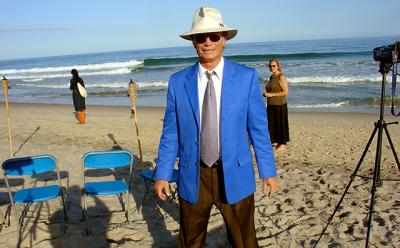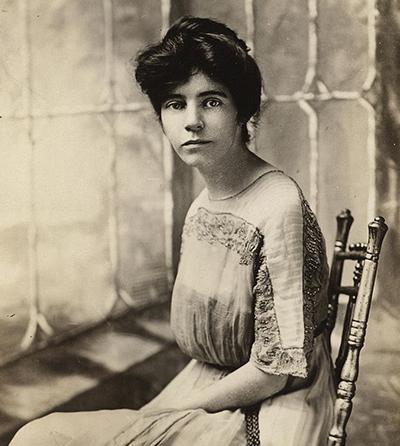The Secret of ‘Birdman,’ by Frank Vespe
The Secret of ‘Birdman,’ by Frank Vespe
The back row of the East Hampton movie theater is kinda like your own studio apartment with a wide-screen TV on gym candy. Not only can you feast undisturbed in stocking feet on contraband Cracker Jacks, Raisinets, Strawberry Twizzlers, and a large can of Arizona green iced tea with a foot-long veggie delight made fresh by Joe the deli manager at Stop & Shop, but if the movie’s boring, you can nod out, if the movie’s romantic, you can make out, and if the movie sucks, you can sneak out without someone behind barking “Down in front!”
But the night I caught “Birdman,” none of those three were the issue, except that the audio disturbed me — not its poor quality, but the faint click I heard in Riggan Thomson’s opening monologue, very obvious for someone who has edited video projects for 30 years.
Three months would pass until the East Hampton Library had a DVD of “Birdman,” so I rushed to get my free three-day rental and slowed it down where I found the audio edit, a section of monologue that was purposely cut out by the director. Curious, I called an ex-sweetheart turned actress in Sherman Oaks to get a copy of the first page of the script.
“Just the first page?” she asked.
“I may have unearthed the biggest cover-up since the grassy knoll,” I shot back.
And, as I thought, the original scripted monologue was much different from what was seen in the Academy Award-winning film:
FADE IN:
INT. RIGGAN’S DRESSING ROOM — THEATER — DAY
We slowly tilt up to discover the back of Riggan Thomson (55). He is in the proper Lotus position, dressed only in tight white briefs, and he appears to be meditating deeply . . .
MAN (V.O.)
Smells like — Rawlings, five ounce, made in Costa Rica, 108 double stitches, raised seams, white leather base — balls.
A slight twitch in Riggan’s neck.
MAN (V.O.)
We don’t belong in this . . .
Unaware of the passion for baseball in America and in his leading actor, who had a clause written into his “Batman” contract that should the Pittsburgh Pirates make the playoffs, filming would cease for the duration, the director struck out in red ballpoint ink all baseball references in the original script.
Anyone who has ever run through a ball field of freshly cut grass, rubbed Mazola oil in the palm of his Wilson glove, connected on the sweet spot of a 33-inch wood Louisville Slugger, or jumped up and down with a bunch of equally minded guys atop a 15-inch clay mound after a hard-fought game, knows there is no scent as intoxicating, as euphoric, as orgasmic as the smell of a little white ball made in Costa Rica.
I love baseball.
Long before my gold Royce Union five-speed bike with banana seat and sissy bar, way before my first broken heart on 27th Street in Astoria, and ages before my four amazing kids entered my life, there was one friend always by my side, always with a smile, forever a friend, and still a friend today: baseball.
My earliest recollection of smells-like-balls occurred at 5 when my brother pointed at the TV, said the blond-haired, left-handed pitcher standing majestically on the mound for the New York Yankees was from Astoria, then lobbed to me a brand-new white piece of heaven he bought at E.J. Korvette’s. I was addicted for life to the smell and game of baseball, hoarding every penny in a Hellmann’s mayonnaise jar, collecting every Green Stamp my mother brought home from grocery shopping, until I’d saved enough and had filled Green Stamp books for a catcher’s or outfielder’s mitt, another wood baseball bat, or another Rawlings leather baseball with 108 red stitches.
Richie Shubert stood more than 6 feet, but on top of the mound he could be the center for the New York Knicks, only meaner. William Cullen Bryant High School was Long Island City High School’s nemesis, and on a balmy April day in ’73 a nail-biter game was in progress as our ace pitcher, John Dinkelmeyer, proved a formidable warrior, mowing down batter after batter after batter with his 12 to 6 o’clock curve. I should know, I was his catcher and gloated over every missed pitch.
At 18, Richie threw upward of 90 miles per hour, and as a lefty was scouted by every major league team. When I stepped up to the plate in my seventh batting position, five of the preceding batters having struck out, I thought, “Make contact.” I knew he would throw heat, so I swung at the first pitch, sending a major league mile-high pop to the right side, foul, the first baseman missing it by inches. Surprised, I felt confident he’d throw me another fastball, and remember somehow making it to first base, a single.
Richie was drafted two months later in the second round by the Texas Rangers and John by the Detroit Tigers. It felt nice to catch with and bat against major league players.
I love baseball.
My first full-time job was with Exxon on Sixth Avenue, where I quickly befriended co-workers around the world, getting invites every weekend, but none friendlier than Roger in Hamilton, Bermuda, where I traveled almost every month, thanks to my girlfriend, a Northeast Airlines flight attendant named Judy, who made me her “buddy” for free travel. I would sleep on Roger’s couch in a pink stucco house in Devonshire Parish surrounded by the smell of hibiscus.
Carlsberg Elephant beer, Long Island iced teas, and dancing all night at Disco 40 on Front Street were my evening passions, but during the day I made friends playing catch, hitting fungoes, and shagging flies with guys I would never see again on ball fields across Bermuda.
I love baseball.
My mother was near death when she aspirated while eating breakfast minutes after general anesthesia from knee replacement at the Hospital for Special Surgery on East 17th Street, but as in the scene in which Adrian whispers “Win” to her husband, Rocky, she pulled me close and similarly whispered, “Go try out again for the Yankees, Frankie. You’ll make it this time.”
Sadly, I was not the 23-year-old who’d tried out for the Yankees at Yankee Stadium 23 years earlier, but rather 46.
A baseball field is serene, temple-like, sacred, void of outside influences of everyday life — kind of like its own bubble, similar to Biosphere 2. Pick up a baseball anywhere in the world, have a catch, and you’ll immediately make a friend regardless of color, language, religion, gender, or which side of the aisle he votes.
Albert Einstein said, “I don’t know how World War III will be fought, but I know how World War IV will be fought — sticks and stones.” But when I searched the dark web for his exact phrasing, I stumbled onto Columbia University’s applied physics classified files, where I discovered words scribbled by “AE” on the back of a Topps Mickey Mantle rookie card. It read in part, “WWIV will be fought on a baseball diamond of 90 ft squared using wooden bats and leather balls (bd(90ft)squared + bt + bl = WW4).”
If the enemies of the world discovered the magic of the little white ball, perhaps the world would be a more peaceful place.
And now my son Paul pitches for the high school team, forcing me for an hour every day to our backyard, where he climbs his improvised mound constructed with pressure-treated 2-by-8s from Riverhead Building Supply to perfect his good heater and better splitter, hoping to improve his deuce (curve) at U.C.L.A. baseball camp in July.
He loves baseball.
So the next time you take out a free three-day DVD rental of “Birdman” from the East Hampton Library, listen close, real close, for the faint click during Riggan Thomson’s opening monologue, and you’ll know the secret behind smells-like-balls.
Regrettably though, you won’t see me anytime soon checking out movies or CDs or books or the must-see “Mork & Mindy: The Complete Second Season” at the library, as they blocked my privileges. I owe $14 in late fees.
Frank Vespe, a regular “Guestwords” contributor, lives in Springs.



